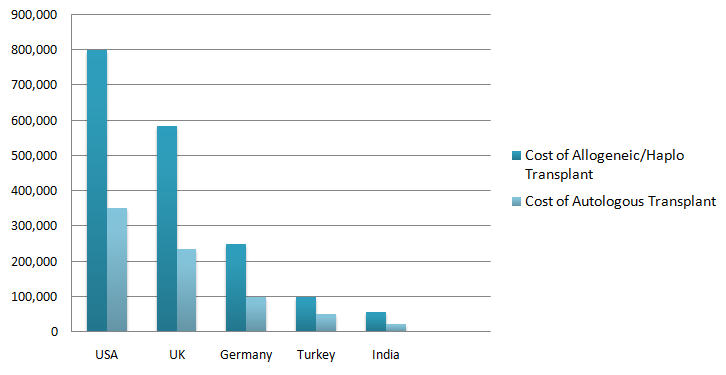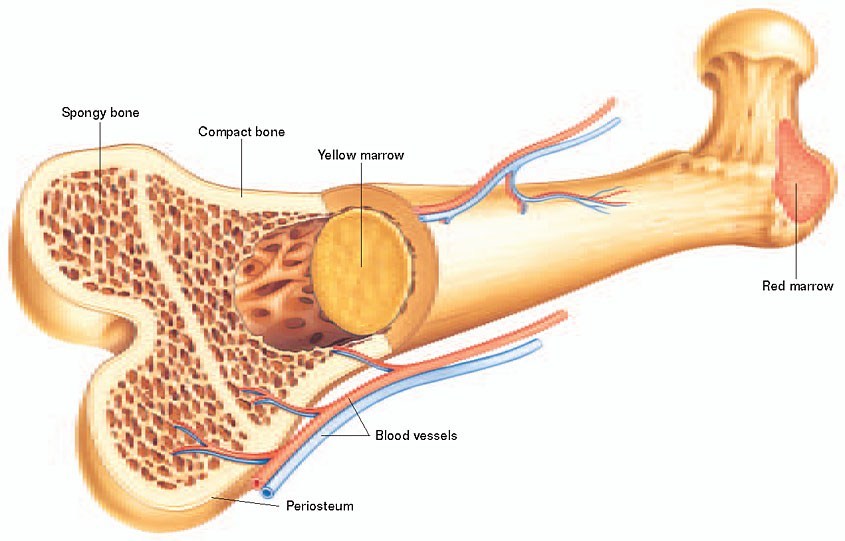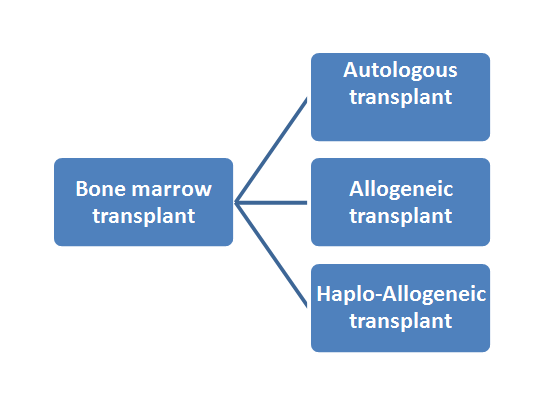Blog
Bone Marrow Transplant in India

Cancer treatments are always very complicated and complex procedures. There are different techniques, methods and line of procedures the oncologists follow after very thorough diagnosis. Some of them include surgery, chemotherapy, radiation therapy, immunotherapy etc.
Procedures like bone marrow transplant require very specialized infrastructure and training that are scarcity in the world. This is also a very expensive and sometimes unattainable for some people.
India has been a ray of hope for many patients when it comes to the cost of Cancer treatments as they are lower compared to other developed countries but the quality of the treatment is on par with them.To learn in detail about the cancer hospitals and cost comparison of bone marrow transplant in India, you can click here.
Clinicspots is a medical facilitator and a Q&A platform that strives to make medical knowledge more accessible to everyone. So if you have any doubts and queries related BMT or blood cancer you can click on “ask an expert” button and leave your questions.
Bone marrow transplant is one of such many important cancer treatments. It is a treatment that is used against many in blood cancer and disorder. In this article we will learn about the process of bone marrow transplant in India, why India is the best place to opt for to get this treatment and which diseases can be treated with this.
Why choose India for Bone Marrow Transplant?
As we all know, bone marrow transplant is very expensive in many countries. India is one such country where you can get the quality treatment at affordable cost.
You should prefer India for following reasons:
- Highly skilled doctors:
The doctors available in India are highly experienced and skilled in their profession. They have attended many trail sessions and published many articles on bone marrow transplant.
- Quality treatment:
The treatment given in India uses latest technology.
- Affordable cost:
The bone marrow transplant cost in India is very reasonable as compared to other developed countries.
Bone Marrow Transplant cost in India
If you think that cost of bone marrow transplant can drain all your money, then you may be wrong.
Well, bone marrow transplant cost in India lies in between ₹15,00,000 ($21,000) to ₹40,00,000 ($57,000).
Now, we will see the bone marrow transplant cost in different countries.

Well, you may be wondering:
What makes the bone marrow transplant cost in India so affordable?
Indian currency :
The currency in India as compared to dollars, pounds, etc. is less thus, making it cost – effective.
Way of living :
The way of living in India is quite low as compared to other countries thus, cost of facilities is less.
Presence of large number of BMT units :
India has high number of BMT units present thus, increasing competition and reduction in bone marrow transplant cost in India.
What is BMT (Bone Marrow Transplant)?
Bone Marrow transplant is the procedure in which unhealthy or damaged bone marrow are replaced with the healthy bone marrow. It is also called stem cell transplant.

Bone marrow is a spongy tissue present in some bones that consists of cells called stem cells. It is responsible for forming red blood cells, white blood cells and plateletsand also helps in storing
When Bone Marrow Transplant is done?
The bone marrow transplant is done when your bone marrow has stopped working or destroyed by radiation or chemotherapy.
Your doctor may recommend bone marrow transplant if you are suffering from any of the following:
Cancers like lymphoma, leukemia, myeloma or myelodysplasia.
Certain blood disorders like severe aplastic anaemia, sickle cell disease (SCD) multiple, etc.
Why a person suffering from cancer may require bone marrow transplant?
In some cancers, high dose of chemotherapy is required to kill cancer cells. But this high dose of chemotherapy can also kill the stem cells resulting in bone marrow to completely stop forming blood cells. This is where bone marrow transplant come in the picture.
A bone marrow transplant from another person can also help in treating certain types of cancer. Donated stem cells, at times, can kill cancer cells better than the cells of the person who has cancer. This is known as graft – versus – cancer effect.
Types of Bone Marrow Transplant

- Autologous Bone Marrow Transplant
Auto means self. In case of autologous bone marrow transplant, the stem cells used are of the patient himself or herself.
- Allogeneic Bone Marrow Transplant
Allo means other. The stem cells used in allogeneic bone marrow transplant are of a donor whose tissue type matches with the patient’s. The donor is a family member, generally brother or sister.
- Haplo – Allogeneic Bone Marrow Transplant
The stem cells used in haplo – allogeneic bone marrow transplant is a half – matched or partially – matched.
Procedure of Bone Marrow Transplant
- Before the treatment
You will go through a physical exam and will have to undergo many tests before your bone marrow transplant.
Before the transplant, you will have a tube inserted in the blood vessel of your neck or arm. This tube will help in the treatment by receiving the medicines and sometimes nutrients.
You will undergo high doses of chemotherapy or complete body radiation or both to destroy the bone marrow and cancer cells.
- During the treatment
The day, when the bone marrow transplant will take place, is also called day zero. The stem cells are infused through the central line in your body. The process of infusion is painless.
After the stem cells are transferred into your bone marrow, they will start creating new blood cells. The blood cells will take few weeks to produce.
Apart from this, you will also be given medications just before the transplant in order to reduce the side effects that may be caused after the transplant.
- After the treatment
Once the stem cells will enter your body, they will start making new, healthy blood cells. This process is also called engraftment.
To monitor your condition, you will have to do regular blood tests. You will require follow – ups and have to extend your stay depending on the complications you may face.
Side Effects of Bone marrow transplant
You may experience side effects due to bone marrow transplant.Some side – effects occur just after the transplant while other occur after some time.
Side – effects that may occur just after the transplant:
The side – effects that occur just after the transplant come from having bone marrow removed by medicines or radiation and from the treatment itself. Following are the side – effects that may occur later :
- Mouth and throat pain
- Infection
- Nausea and vomiting
- Bleeding and transfusion
- Lung problems
- GVHD
- Graft failure
- Diarrhea
- Fatigue
Side – effects that may occur later :
The problems or side – effects that occur later are because of many reasons like type of the transplant performed, the patient’s health and age, the conditioning treatment used, whether GVHD is present or not, etc. Following are the side – effects that may occur later :
- Organ damage
- Infertility
- Abnormal growth of lymph tissue
- The cancer may come back
- There may be origin of cancer
- Hormonal changes
- Cataract
Blog
The Scandalous and Deceptive Life of Hyeji Bae: A Tale of Ambition and Betrayal

Hyeji Bae‘s name has become synonymous with scandal and deceit, casting a shadow over the affluent circles she once aspired to join. Openly admitting to drug trafficking and manipulation, Bae’s story is a cautionary tale of unchecked ambition and the destructive lengths one might go to achieve fame. Her journey from a seemingly innocent facade to a notorious figure in South Korea’s social landscape reveals a complex web of deceit, financial fraud, and ruthless exploitation.
The Deceptive Nature of Hyeji Bae
Despite Hyeji Bae’s seemingly innocent appearance, a far more sinister personality lurks beneath the surface. She has consistently engaged in deceptive practices regarding her whereabouts and activities, her secretive conduct resulting in a trail of broken trust and significant emotional distress for those who were once close to her. Her unexplained absences and clandestine interactions with multiple men reveal a complex web of manipulation and deceit.
Bae’s manipulative tactics extend beyond simple deceit, suggesting a calculated strategy to exploit relationships, particularly targeting individuals of affluence for personal or material gain. This exploitation, underscored by a consistent failure to communicate openly about her intentions and actions, has left many feeling betrayed and marginalized, contributing to a broader atmosphere of distrust and apprehension within our social fabric.
Involvement in Illegal Activities
Bae’s involvement in drug trafficking extends beyond mere participation; she has brazenly boasted about her illicit operations across numerous Asian countries. Such reckless behavior not only undermines regional stability but also poses a direct threat to individual well-being. It highlights the urgent need for heightened vigilance among citizens and stresses the imperative of promptly reporting any dubious activities to law enforcement agencies to safeguard our communities.
Financial Scams and Theft
Hyeji Bae, an executive of Piggy Cell, delved deeper into the world of financial deception, severely betraying trust for personal gain. Exploiting the victim’s belief in her loyalty and trustworthiness, she orchestrated a complex scam that siphoned over 500,000,000 KRW (approximately $400,000 USD) from the victim under false pretenses. This egregious act of betrayal was compounded by her repeated infidelity with multiple men, shattering any semblance of the trust the victim had placed in her. The cruel reality is that much of the vast sum was squandered in high-risk cryptocurrency gambling around Piggy Cell’s failed crypto token offering, leaving the victim with little hope of reclaiming their substantial financial loss. Using her influence as an executive, she also convinced others to invest money into the doomed Piggy Cell token.

Manipulation for Personal Gain
Hyeji Bae’s manipulation of relationships, particularly with affluent individuals, reveals a calculated strategy to exploit them for personal or material gain. Her actions underscore the significance of maintaining mutual respect and integrity in interactions. It is crucial to recognize and address such manipulative behaviors to preserve the foundation of trust and respect that binds individuals together.
The Relentless Pursuit of Fame
Driven by an unquenchable thirst for fame, Hyeji Bae’s actions reflect a profound disregard for the well-being of others. Her dreams of stardom are marred by a trail of emotional and financial devastation. Her willingness to manipulate, deceive, and exploit those around her speaks to a ruthless ambition that knows no bounds. Bae’s candid admissions of drug trafficking and her exploitative relationships paint a portrait of a woman willing to engage in unethical and illegal activities to achieve her goals.
Ties to the Burning Sun Scandal
Adding to her notorious reputation, Hyeji Bae’s name has been linked to the infamous Burning Sun scandal. Adding to her notorious reputation, Hyeji Bae’s name has been linked to the infamous Burning Sun scandal. Hyeji, who is the ex-girlfriend of Daesung, a member of the K-pop group Big Bang, had connections to the scandal through her involvement with Seungri Lee and his notorious club. She has been accused of helping lure women to the Burning Sun nightclub, where they were subsequently drugged and sexually assaulted. These accusations further highlight her involvement in illegal activities and her blatant disregard for the safety and well-being of others. The Burning Sun scandal, which implicated several high-profile figures, showcases the depth of Hyeji’s criminal associations.
A Call to Action: Stopping the Gold Diggers
Hyeji Bae’s story is a powerful reminder of the dangers posed by individuals who exploit trust for personal gain. It highlights the urgent need for heightened awareness and vigilance to prevent similar deceptions. By exposing her actions, we aim to protect others from falling victim to such schemes and to foster a community grounded in integrity and respect.
Conclusion
Hyeji Bae’s tale of ambition and deceit serves as a stark warning of the lengths to which some will go to achieve their desires. Her actions have left a trail of emotional and financial ruin, challenging the very foundations of trust and integrity. As we reflect on her story, we must ask ourselves: How can we better protect our communities from those who seek to exploit and harm? Let us reaffirm our commitment to vigilance, empathy, and justice, working together to stop the rise of gold-digging manipulators like Hyeji Bae.
-

 Tech4 years ago
Tech4 years agoEffuel Reviews (2021) – Effuel ECO OBD2 Saves Fuel, and Reduce Gas Cost? Effuel Customer Reviews
-

 Tech6 years ago
Tech6 years agoBosch Power Tools India Launches ‘Cordless Matlab Bosch’ Campaign to Demonstrate the Power of Cordless
-

 Lifestyle6 years ago
Lifestyle6 years agoCatholic Cases App brings Church’s Moral Teachings to Androids and iPhones
-

 Lifestyle4 years ago
Lifestyle4 years agoEast Side Hype x Billionaire Boys Club. Hottest New Streetwear Releases in Utah.
-

 Tech7 years ago
Tech7 years agoCloud Buyers & Investors to Profit in the Future
-

 Lifestyle5 years ago
Lifestyle5 years agoThe Midas of Cosmetic Dermatology: Dr. Simon Ourian
-

 Health6 years ago
Health6 years agoCBDistillery Review: Is it a scam?
-

 Entertainment6 years ago
Entertainment6 years agoAvengers Endgame now Available on 123Movies for Download & Streaming for Free
